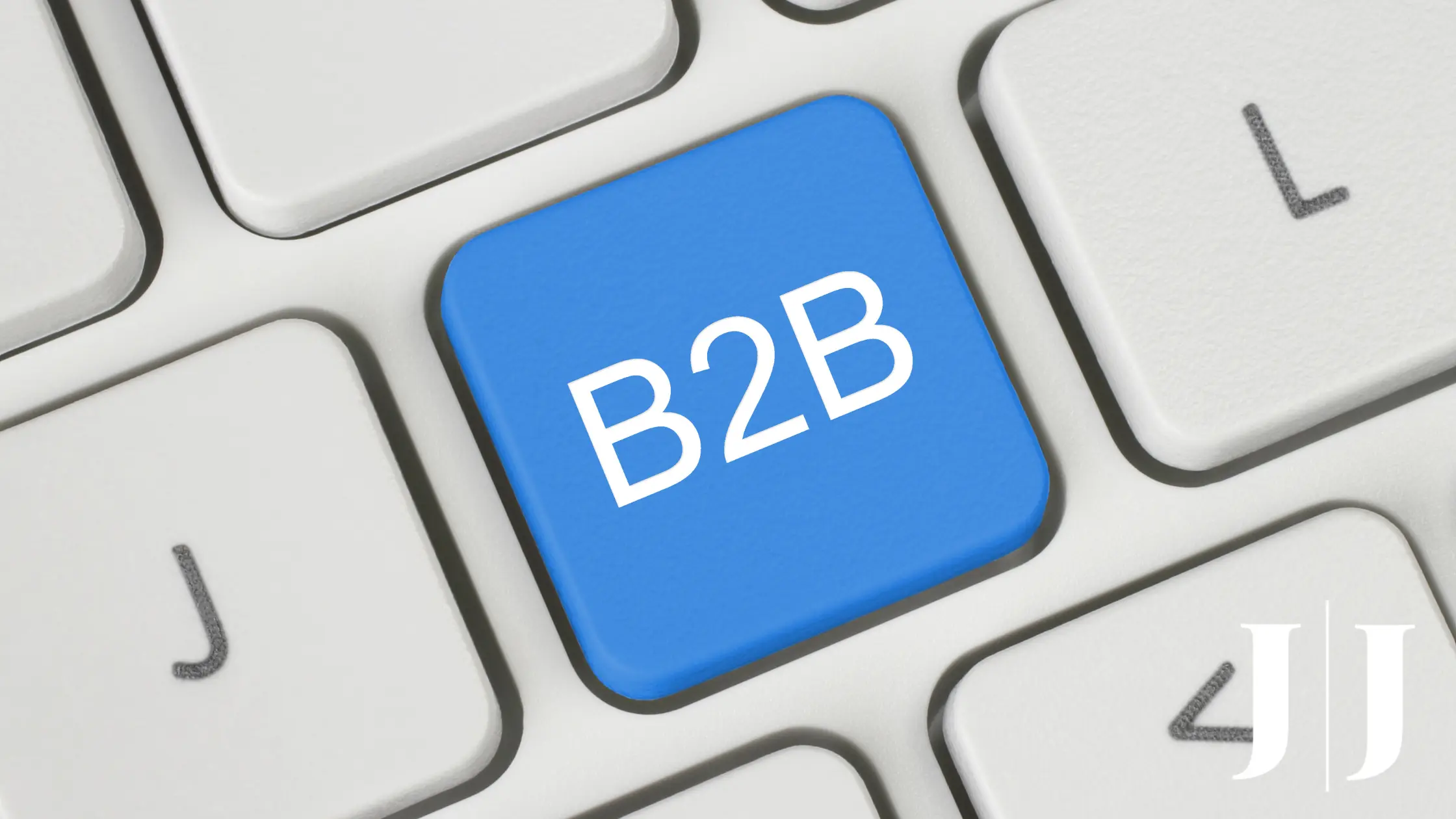It’s crucial to stay ahead of the curve in B2B growth marketing, especially when looking towards the future. In 2024, the industry is set to undergo significant transformations, driven by emerging trends that will shape the way businesses connect, communicate, and collaborate. In this trend analysis article, we’ll explore the key trends that you should watch out for as you navigate the evolving landscape of B2B marketing. From the integration of AI and automation to the dominance of video marketing, personalization at scale, and the focus on sustainable and ethical marketing, the future of B2B growth marketing is promising and full of innovative strategies to explore.
HAI-to-HAI Marketing: The Rise of AI-Driven Strategies
The Shift towards Generative AI
Marketing in 2024 is witnessing a significant shift towards generative AI, where AI tools are becoming mainstream in marketing organizations. This transformation is revolutionizing content marketing and personalizing customer journeys like never before.
Balancing AI Efficiency and Authentic Engagement
While leveraging AI for efficiency in marketing is crucial, maintaining authentic engagement remains paramount. Striking a balance between AI-driven strategies and genuine interactions is key to ensuring long-term success and customer satisfaction.
It’s important to remember that while AI can improve processes and increase scale, the human touch and authenticity in marketing interactions are what truly resonate with customers. By focusing on combining the efficiency of AI with the authenticity of human engagement, you can create a winning formula for B2B growth marketing in the future.
Contextual Targeting: The Future of Media Management
Moving Beyond Identity-Based Targeting
Contextual targeting is the next evolution in media management, surpassing traditional identity-based strategies. By focusing on context, you can create more resonant and effective marketing campaigns that speak directly to your audience’s needs and interests. This shift allows for a deeper connection with consumers, leading to higher engagement and conversion rates.
The Nuances of Contextual Targeting
Future trends in contextual targeting will emphasize the importance of understanding the specific contexts in which your audience interacts with your brand. By tailoring your messages to fit these contexts, you can create a more personalized and immersive experience for your customers, ultimately driving loyalty and brand advocacy.
The Transformation of Search Marketing
The Impact of Generative AI on Search
One significant change in the landscape of search marketing is the utilization of generative AI. This technology is revolutionizing how companies approach search engine optimization and content creation. With generative AI, the way businesses interact with data and optimize their strategies is evolving, leading to more personalized and effective marketing campaigns.
Rise of Specialized Large Language Models
Rise of specialized large language models is reshaping the search marketing industry. With the emergence of these advanced models in app stores, traditional SEO practices are being challenged. Businesses must adapt to the changes brought on by these models to stay competitive in the evolving landscape of search marketing.
With the rise of specialized large language models in the search marketing domain, businesses need to embrace this change to remain relevant. These models are set to disrupt traditional search engines and chatbots, necessitating a shift in strategies to leverage their capabilities effectively. Adapting to this new paradigm will be crucial for staying ahead in the ever-evolving field of search marketing.
B2B Influencer Marketing: A Dynamic Landscape
The Growing Importance of Influencers in B2B
Importance of leveraging influencers in B2B marketing is on the rise. As brands look to establish authentic connections with their audience, influencers serve as powerful allies in driving engagement and credibility. Their role goes beyond simply promotion, extending to being catalysts for innovation and ambassadors for complex products and services.
The Role of Micro-Influencers in Reach and Engagement
Influencer marketing in the B2B space is not limited to macro-influencers. Micro-influencers with follower counts between 10,000 and 20,000 are gaining traction for their ability to reach niche audiences effectively. These smaller-scale influencers offer a more personalized approach, fostering deeper engagement and trust with their followers.
Understanding the impact of micro-influencers on reach and engagement is crucial in today’s evolving marketing landscape. While macro-influencers may have broader reach, micro-influencers often deliver higher engagement rates due to their more targeted audience base. By harnessing the authenticity and niche appeal of micro-influencers, B2B brands can create meaningful connections and drive impactful results in their marketing campaigns.
The Growing Importance of Personal Contact
The Value of Human Connection in an AI-Dominated Era
In a world increasingly dominated by AI, human connection is more valuable than ever. As consumers crave genuine interactions, personal contact becomes a key differentiator in B2B marketing. Building relationships and trust through personal engagement can set your brand apart in a sea of automated interactions. It’s vital to infuse authenticity and empathy into your marketing strategies to resonate with your audience on a deeper level.
Distinguishing between External Influencer Marketing and Internal Brand Ambassadorship
To succeed in influencer marketing, understanding the difference between external influencer partnerships and internal brand ambassadorship is crucial. While external influencers bring reach and credibility to your brand, internal brand ambassadors offer authenticity and a deeper connection with your audience. Utilize both strategies strategically to maximize the impact of your influencer marketing efforts and build lasting relationships with your customers.
External influencers can amplify your reach, while internal brand ambassadors embody your brand values. External influencers focus on creating awareness, while internal brand ambassadors nurture long-term relationships. By balancing the two, you can create a holistic influencer marketing strategy that resonates with your target audience and drives meaningful engagement.
Navigate Potential Conflicts in B2B Micro-Influencer Marketing
The Rise of Conflicts of Interest
Keep a close eye on the evolving landscape of B2B micro-influencer marketing, where the rise of influencers with follower counts between 10,000 and 20,000 may lead to conflicts of interest, especially when they are also acting as corporate ambassadors. This complexity requires a strategic approach to influencer partnerships to ensure transparency and maintain credibility.
Strategic Approaches to Influencer Partnerships
Influencer partnerships in the B2B space require careful navigation to avoid conflicts of interest and maintain authenticity. Strategic approaches involve setting clear guidelines, ensuring influencers align with your brand values, and establishing mutually beneficial relationships based on trust and transparency. By fostering genuine connections with micro-influencers, you can leverage their reach while safeguarding your brand’s reputation.
LinkedIn’s Growing Dominance in B2B Social Commerce
The Evolution of LinkedIn as a Social Commerce Platform
Growing as the world’s largest business network, LinkedIn is set to become even more influential in social commerce. With upcoming features such as Sales Navigator and Buyer Intent, LinkedIn is poised to become a powerhouse in B2B social commerce. Meanwhile, platforms traditionally seen as consumer-centric, such as TikTok, are making inroads into B2B through partnerships and enhanced commerce capabilities.
The Impact of Sales Navigator and Buyer Intent Features
With the introduction of Sales Navigator and Buyer Intent features, LinkedIn is equipping businesses with powerful tools to enhance their social commerce strategies. These features enable targeted outreach, personalized engagement, and enhanced lead generation in the B2B space. Leveraging these capabilities can significantly boost conversion rates and sales performance.
Sales Navigator and Buyer Intent features on LinkedIn revolutionize the way B2B companies approach social commerce. By providing deep insights into buyer behavior and preferences, businesses can tailor their marketing efforts with precision, resulting in more effective campaigns and stronger customer relationships. Embracing these tools can drive substantial growth and success in the evolving landscape of B2B social commerce.
Social Commerce: The B2B Future
Despite the rapidly evolving landscape, B2B marketing is embracing social commerce in preparation for a digital-centric sales future. The shift from Essential B2B Marketing Trends of 2024 And Beyond to B2B2C is evident, with global B2B players now targeting consumers as well. This transformation highlights the importance of building personal relationships on social media platforms.
The Shift from B2B to B2B2C
On the brink of the digital revolution, the B2B landscape is witnessing a significant shift to B2B2C. With 54% of global B2B players now targeting consumers alongside businesses, the focus is on expanding market reach and tapping into new consumer segments.
Building Personal Relationships on Social Media Platforms
Commerce media is key as B2B companies recognize the power of personal connections on social media platforms. Engaging with consumers on a more personal level helps build trust, enhance brand loyalty, and ultimately drive conversion rates. By prioritizing genuine interactions, businesses can establish long-lasting relationships with their target audience.
The Micro-Video Momentum
The Rise of Short-Form Video in B2B Marketing
After the rise of short-form video in B2B marketing, platforms like YouTube Shorts and Facebook Reels are providing cost-effective advertising opportunities for businesses. These micro-videos offer a quick and engaging way to showcase products, services, and brand messaging to a wide audience. The trend towards short-form video content is gaining momentum, as businesses seek to capture attention in a busy digital landscape.
Cost-Effective Advertising Opportunities
An emphasis on cost-effective advertising opportunities through micro-videos is driving B2B marketing strategies. Businesses can leverage platforms like YouTube Shorts and Facebook Reels to reach a broader audience without hefty production costs. These short, impactful videos can be an efficient way to convey brand messages and engage with potential customers, making them an imperative tool in modern marketing.
Summing up
On the whole, the future of B2B growth marketing is poised for a revolution with key trends shaping the industry in 2024. From the integration of AI and automation to the dominance of video marketing and personalization at scale, businesses are adapting to stay competitive and relevant. Sustainable and ethical marketing practices, along with a focus on data-driven decision-making, are also becoming paramount. As the landscape evolves, staying informed, engaging with thought leaders, and leveraging advanced analytics platforms will be crucial for success in the ever-changing world of B2B marketing.










